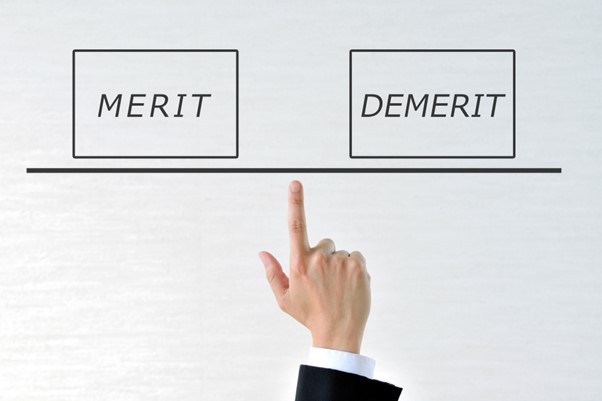A sublease contract is a unique rental management method where a sublease company acts as an intermediary between the landlord and the tenant.
In this management model, the sublease company leases the entire property and then subleases it to tenants. This can reduce the landlord’s management burden and ensure a stable rental income. However, there are some issues to be aware of when using this method, such as potential decreases in income and difficulties in contract termination.
This article will detail the precautions, operating mechanisms, advantages, and disadvantages of sublease contracts. After reading this article, it will be clearer which landlords are suitable for adopting sublease contracts.
What is a Sublease Contract? An In-depth Analysis of Its Mechanism and Precautions

This article will explain what a sublease contract is and how it operates from the following two aspects:
● Overview of Sublease Contracts
● Differences between Sublease Contracts and General or Self-Management
Overview of Sublease Contracts
A sublease contract is a special rental agreement signed between a landlord and a sublease company. The basic operation model involves the sublease company leasing the entire property and then subleasing it to individual tenants.
In this management model, the landlord signs a lease contract with the sublease company, and the tenants sign lease contracts with the sublease company. The rent flow is from the tenants to the sublease company, and then from the sublease company to the landlord.
Through this method, the landlord does not need to manage the rental personally and has a higher chance of obtaining stable rental income.
As a real estate management method, sublease contracts have gained attention in recent years. However, special attention should be paid to issues such as profitability and contract conditions.
Differences between Sublease Contracts and General or Self-Management
In general management, landlords usually entrust a sublease company to manage the rental business and personally sign lease contracts with tenants. In self-management, the landlord handles all management tasks personally.
In a sublease contract, the sublease company first leases the entire property from the landlord and then signs contracts with individual tenants. In other words, through a sublease contract, the landlord only needs to sign a lease contract with the sublease company and does not need to sign contracts with tenants, greatly reducing the costs associated with renting and managing the property.
Each of these management methods has its advantages and disadvantages. Landlords can choose the method that best suits their needs.
Merits and Demerits of Sublease Contracts

Subleasing is currently a highly regarded contract form in rental management. The following explains its merits and demerits.
Merits
The biggest merit of subleasing is that the sublease company takes full responsibility for property management tasks. Landlords can avoid the hassle of collecting rent, maintaining equipment, and renewing contracts. Additionally, when signing a contract with a sublease company, choosing a plan that includes rent guarantees during vacancy periods can ensure stable rental income, which is particularly attractive to overseas residents or novice landlords.
Subleasing is gaining attention as a cost-saving management method that can achieve stable rental operations. However, since the guarantees provided by sublease companies vary, it is important to carefully confirm the relevant details when signing a contract.
Demerits
Despite its merits, subleasing also has some demerits.
Firstly, landlords cannot personally select tenants. While this reduces the management burden, it may cause landlords to feel uneasy about whether the property is being well-maintained by the tenants.
Secondly, the fees charged by sublease companies are usually higher than general management commission fees, which can reduce the landlord’s income. Additionally, there is the concept of a “non-liability period,” during which the sublease company is not required to pay rent for vacant periods.
Understanding these demerits and carefully reviewing contract details is crucial. Although subleasing is attractive, it requires careful consideration.
Precautions for Sublease Contracts

When signing a sublease contract, there are generally four key points to pay special attention to:
● The proportion of rent guarantee
● Conditions for contract termination
● Non-liability periods and rent adjustment periods
● Costs for moving out, equipment maintenance, etc.
These factors can significantly impact the landlord’s income. This article will introduce each aspect in detail.
The Proportion of Rent Guarantee
When signing a sublease contract, the proportion of rent guarantee is one of the key considerations.
Typically, sublease companies guarantee 80% to 90% of the rent paid by tenants, but this proportion can vary due to various factors. Given the differences between sublease companies and property characteristics, it is risky to judge the contract’s fairness based solely on percentage.
Landlords should comprehensively consider factors such as the occupancy rate in the surrounding area, rental market trends, and the competitiveness of the property to evaluate whether the guarantee proportion offered by the sublease company is appropriate. Additionally, it is crucial to carefully consider whether the sublease contract aligns with their own interests.
The proportion of rent guarantee is an important indicator for landlords to obtain stable rental income, but long-term profitability should also be considered.
Conditions for Contract Termination
In subleasing, the conditions for contract termination are also an important consideration.
When adjusting rent, if the landlord and the sublease company cannot reach a consensus, it may lead to contract termination. In such cases, the landlord may need to pay a penalty to the sublease company.
Additionally, the contract may sometimes include unfair terms that allow the sublease company to unilaterally terminate the contract if the landlord does not accept changes in conditions.
Sublease companies may attach conditions to the contract that are unfavorable to the landlord. Therefore, when signing the contract, it is essential to carefully check the conditions for contract termination and whether there are any unfair terms in the contract to protect one’s rights.
Non-liability Periods and Rent Adjustment Periods
When signing a sublease contract, the non-liability period and rent adjustment periods are important aspects to pay attention to.
The non-liability period is usually set after the property is completed or after the tenant moves out. During this period, the sublease company is exempt from paying rent to the landlord. The agreement on the non-liability period can significantly impact the landlord’s business plan.
On the other hand, the rent adjustment period is usually set during contract renewal. It is important to understand the frequency of rent adjustments, the upper limit of reductions, and actual cases that have occurred in the past.
These periods are clearly stated in the contract, so landlords should fully negotiate with the sublease company and carefully consider whether it aligns with their interests.
Costs for Moving Out, Equipment Maintenance, etc.
In subleasing, generally, advertising fees and restoration costs are borne by the sublease company, but there may be exceptions. Therefore, when signing the contract, it is crucial for the landlord to confirm the detailed cost-sharing arrangements between the parties.
To avoid unexpected high-cost requests, landlords should confirm who bears each cost and the proportion of cost-sharing. It is especially recommended to detail the costs related to tenant recruitment, moving out, and equipment maintenance in the contract.
This can help avoid unnecessary disputes and ensure stable rental operations. The lack of transparency in cost-sharing is often a potential risk in sublease contracts, so it is essential to carefully review the relevant terms.
Who is suitable for using a sublease contract?

There are two main characteristics of landlords who are suitable for using sublease contracts:
● People new to rental management
● Those looking to reduce the burden of rental management
People New to Rental Management
Subleasing can be a good option for those who are new to rental management or beginners.
Since management tasks and cumbersome procedures can be entrusted to a subleasing company, it helps avoid conflicts and disputes with tenants due to lack of experience. Additionally, whether it’s equipment repairs or communication with tenants, professional assistance can help resolve issues more quickly.
In this way, not only can tenant satisfaction be maintained, but the landlord’s burden can also be significantly reduced.
Those Looking to Reduce the Burden of Rental Management
Subleasing is a good option for those who want to reduce the burden of rental management.
For landlords who are too busy with their business to manage rentals, considering subleasing is worthwhile. Through a sublease contract, landlords can delegate most of the management tasks to professionals, saving time and effort.
Moreover, landlords can free up more time and resources, allowing them to invest the saved manpower and financial costs into other matters, creating greater returns.
Summary

Subleasing is a special rental contract signed between a landlord and a subleasing company. Subleasing has the advantages of reducing management burdens and ensuring stable rental income, but it also has disadvantages such as decreased profitability and difficulty in contract termination.
When signing a sublease contract, special attention should be paid to details such as the rent guarantee ratio, contract termination conditions, non-liability period, and cost burden. Although subleasing can provide significant assistance to those new to rental management or those looking to reduce management burdens, it is essential to consider long-term profitability before signing such a contract.
Subleasing is one of the options for rental management, but it is crucial to fully understand the contract content and carefully assess whether it meets needs before entering into an agreement.











